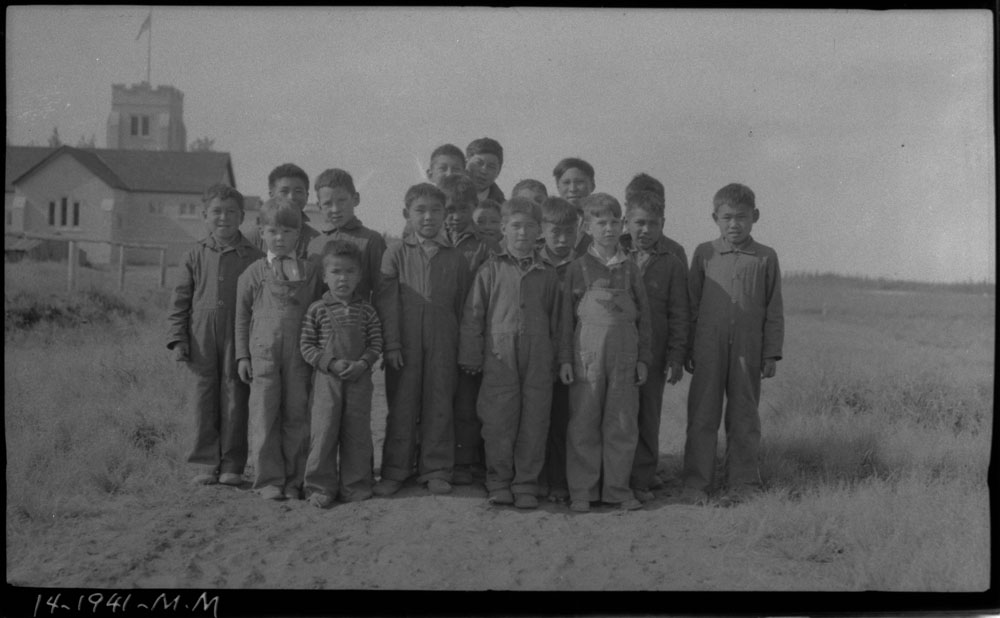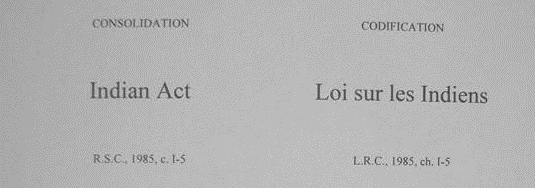Residential schools were government-sponsored religious schools that many Indigenous children were forced to attend. They were established to assimilate Indigenous children into Euro-Canadian culture. Indigenous parents and children did not simply accept the residential-school system. Indigenous peoples fought against – and engaged with – the state, schools and other key players in the system. For the duration of the residential-school era, parents acted in the best interests of their children and communities. The children responded in ways that would allow them to survive.

Resistance at Residential Schools
Children responded to being removed from
their families and institutionalized at residential schools in several
different ways. Many resisted by simply being children: despite facing austere
conditions, a number of them remained playful, sometimes making their school
supervisors the centres of their jokes. Some students gave their supervisors
and teachers unsavoury nicknames in the Indigenous
languages of their communities.
Former student Augie Merasty recalls that during the late 1930s at St. Therese Residential School (also known as Guy Indian Residential School), in Saskatchewan, “as usual, we were forever conjuring up something dangerous or harmful on the platform where she [the Nun] always sat on her chair with her ever-watchful eyes… We stuck the tacks through her carpet cushion with the points up to make sure at least some would penetrate as she set her heavy butt on the chair.”
Other forms of misbehaviour – such as vandalism, breaking the rules and starting food fights – were common. Petty crime was a concern for school administrators, but children also engaged in more serious offences, such as arson. Some students thought acting in this way would prompt the principal to expel them from the school, meaning they would be sent home to their families.
Friendship as Resistance
When they arrived at residential school,
Indigenous children were often segregated – first by religious denomination,
then by gender and by age. Because of this, siblings were often separated from
one another. Having been removed from their homes and families, they found institutional
life extremely lonely. But many children made strong friendships with others in
residential school. Older children protected younger ones; they counselled
young girls about their first periods and stole food to make sure no one went
to sleep hungry.
Though intimate relationships between students were strictly forbidden at the schools, some older children found private moments and spaces to pursue them. They devised plans to communicate with their partners, such as leaving notes in secret places (Bibles, for example), stealing supervisors’ walkie-talkies or sneaking into the dormitory of an intimate partner. During the Truth and Reconciliation Commission of Canada’s national events, many Survivors beamed when they were reunited with old friends, comrades and lovers whom they met while institutionalized together at residential school.
Culture as Resistance
A key goal of the residential-school system
was to eradicate Indigenous cultures. In many instances, the schools and their
staff successfully did so. There were small groups of students, however, who continued
to practise their cultures while institutionalized in an effort to resist
assimilation. Speaking one’s Indigenous language was one way to resist; most children
took great care to speak their languages only in secret, since they were often
punished with physical violence when caught.
“My friends and I hid ourselves behind the buildings and spoke Loucheux. Since I was at school for such a short time, I did not forget Loucheux, but many of the children who stayed at the school longer, did,” recalled Johnny Tetlichi, who hid behind All Saints Indian Residential School, in the Northwest Territories, to speak with his friends in Dinjii Zhuh Ginjik (see Gwich’in).
Other students would paint and draw images of their fish camps along the water and tipis on the Plains as a way to maintain the visibility of their cultures (see Plains Indigenous Peoples in Canada). Some schools taught children how to tan deer and moose hides. Much of this curriculum was introduced because of vocal Indigenous parents. Girls and young women enjoyed sewing and beading according to the customs their mothers had taught them. In the North, where southern garments were not warm enough for the region’s long and frigid winters, school administrators allowed students to wear their parkas, fur garments and mukluks ( see Arctic Indigenous Peoples in Canada).
Running Away from Residential School
As a last resort, some children escaped the oppressive environment of residential schools. By fleeing, they were responding to their poor living conditions in a very physical and visceral way. Sometimes, if they made it home or to a relative’s house, their family returned them to school out of fear of retribution from local Indian Agents. Other children were found by principals, missionaries or Indian Agents.
But there were still others who, while trying to protect themselves, met
unfortunate endings. Eleven-year-old Inuvialuit children Bernard Andreason and
Lawrence Jack Elanik and 13-year-old Dennis Dick were institutionalized at
Stringer Hall in Inuvik, NWT.
In 1972, the three boys ran away. They planned to walk from Inuvik to Tuktoyaktuk,
nearly 150 km away. Elanik tragically perished on the way, and Dick’s body was
never found. After walking alone for nearly two weeks, Andreason was near
starvation and lost consciousness in the bottom of a pingo. He was eventually
rescued and flown back to a hospital in Inuvik.
Parental Resistance
Student attendance at residential schools
was compulsory according to the Indian
Act and other legislation. But Indigenous parents protested
the state of their children’s education and living arrangements as much as their
children did. Some parents kept their children at home despite the possible consequences
of imprisonment, hefty fines or the relinquishment of family
allowance payments.
During the early 1920s, Teetł’it Gwich’in Chief Julius Salu’s daughter died at St. Peter’s Indian Residential School, in Hay River, NWT. After deciding that no child from his community, Teetł’it Zheh, would be sent to residential school again, he said, “If anybody is going to jail for this, I’m taking it.” Parents petitioned the federal government and churches to build more day schools in their communities. They also created national political organizations, including what is now the Assembly of First Nations, to represent their interests. Parents shared criticisms of wider issues at public forums, such as the Berger Inquiry (see Thomas Rodney Berger), and many of them (as well as many of their children) went on to obtain key positions within the Canadian political system to effect change from the inside.
Significance and Legacy
Indigenous peoples continue to resist the residential-school
system in several ways. Some people, for example, have deemed Canadian child-welfare
services to be the “new residential school,” and Gitxsan
scholar and activist Cindy Blackstock has been working as a tireless advocate
for Indigenous children and their parents. Many Survivors are sharing and
documenting their stories so that Canadians can better understand Survivors’ experiences
and the full influence of the residential-school system. Dozens of memoirs and
firsthand accounts of the system are in circulation today (see Indian
Horse).
However, systemic racism and inequities remain, and many Indigenous people continue to struggle with lived and intergenerational trauma. Today, brilliant and highly skilled Indigenous leaders, politicians, language teachers, professionals, artists, Knowledge Keepers, Elders and Youth are working to ensure that future generations of Indigenous people will not suffer historical injustices.

 Share on Facebook
Share on Facebook Share on X
Share on X Share by Email
Share by Email Share on Google Classroom
Share on Google Classroom



.jpg)











